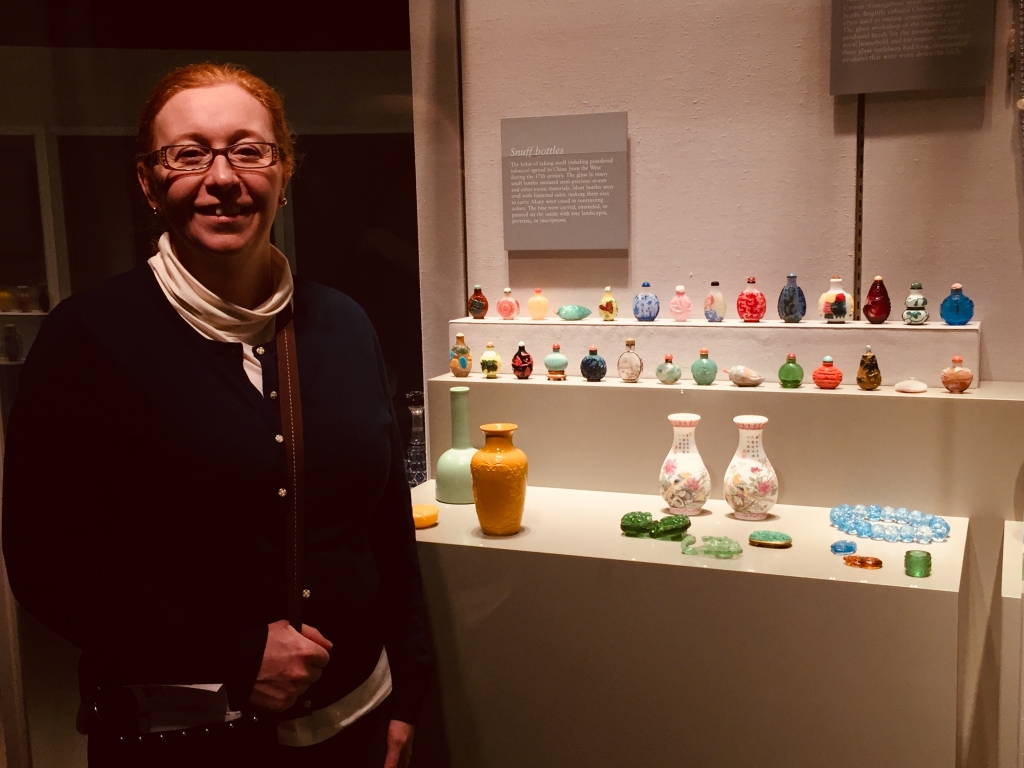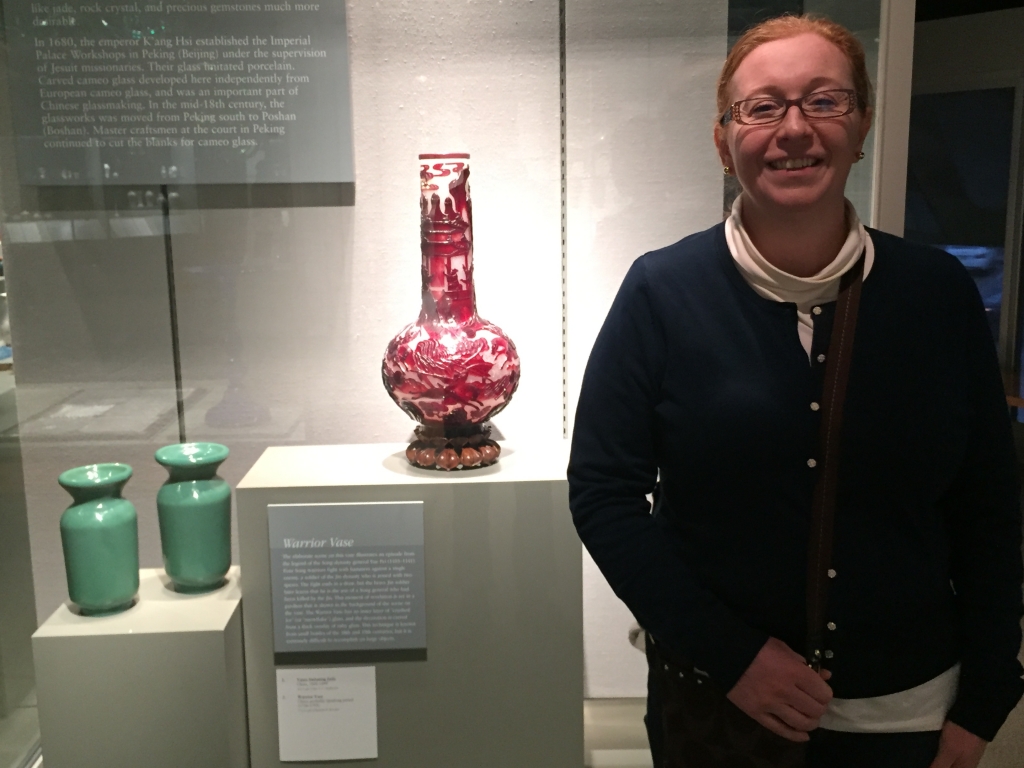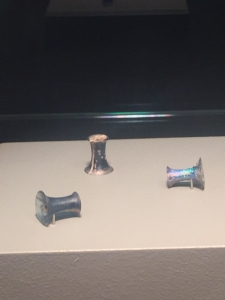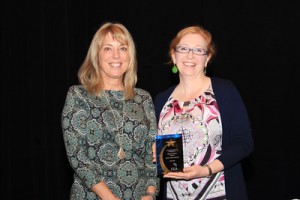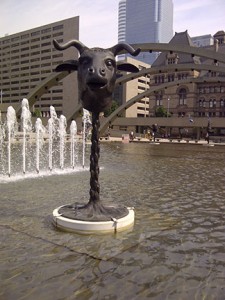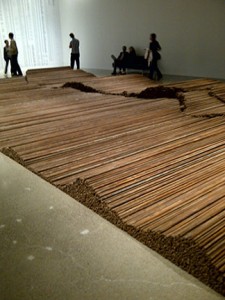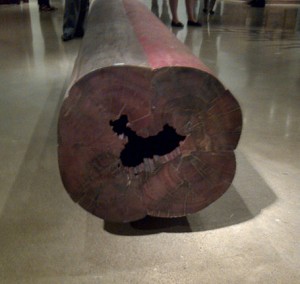Toronto, Canada is home to the Gardiner Museum of Ceramic Art, one of a handful of North American museums devoted exclusively to the art of ceramics. While renowned for its comprehensive collection of Ancient American ceramics, Italian maiolica, English delft and slipware, as well as its 18th century European porcelain, it is the most recent additions to the museum’s collection which distinguish it as a special place for the appreciation of ceramics. With the initial gift of the Robert Murray Bell and Ann Walker Bell Collection of Chinese blue and white porcelain in 1998, followed by the on-going donation of Japanese porcelain by Bill and Molly Anne Macdonald, the Gardiner now also boasts a remarkable collection of Asian ceramics.
As part of the completion of a $20 million dollar expansion in 2007, these Asian collections enjoy permanent galleries and provide the critical historical context for understanding the development of the European porcelain industry. Chief Curator Charles Mason describes both collections as “smart” because they are closest to what a curator would ideally put together in a collection in terms of coherency, and reflect intelligent choices by the Bells and Macdonalds from what was available and affordable.
The Macdonald Collection embodies unusual pieces, including many European-inspired copies of Japanese pieces. It represents the largest and best collection of its kind in Canada consisting of more than 100 fine and rare Edo-period porcelains. The strength of the Bell Collection is its 17th century Chinese blue and white porcelains. The book Cobalt Treasures, written by former Assistant Curator Patricia Ferguson in 2003, describes the approximately 150 pieces the Bells gifted to the museum, which they purchased in New York, London and Toronto primarily during the 1960s.
Two current outstanding exhibitions feature porcelain from these collections and serve to illuminate the broader story of porcelain. The exhibition Hot Commodity: Chinese Blue and White Porcelain and Its Impact on the World describes the history of the first manufactured commodity that can be considered a truly global brand. It features a selection of Chinese blue and white wares from the 16th to the 19th century, the majority of which come from the Bell Collection.
The impact of Chinese blue and white porcelain was felt throughout Asia, the Islamic world and Europe. Charles Mason notes in his introduction to the exhibition that “…by the 17th century it had reached every continent on earth except Antarctica.” An example of influential export porcelain made during the Ming dynasty (1368-1644) at the famous kilns of Jingdezhen (located in Jiangxi province, Southeastern China) is an early 16th century ewer (with later mounts) intended for the Islamic markets in Asia or the Near East. The ablution ewer would have been used for ritual purification before prayers. Its elegant shape is derived from metal prototypes and decorated with a scrolling lotus design in soft cobalt blue. Another highlight, a kendi, also dating to the Ming dynasty ca.1600-40, is a form used in communal drinking vessels made for the Southeast Asian market.
Blue and white pieces appeared at Jingdezhen in the late 14th century. It is believed that traders were shipping Chinese ceramics as early as the 10th century. Archaeological evidence of the trade of blue and white porcelain has been found in shipwrecks, mostly off the coasts of the Philippines and Vietnam, dating from the 15th to the 18th century.
Chinese blue and white porcelain eventually inspired local potters in other countries to develop their own industry. For example, Japan, which first received significant quantities of blue and white in the late 16th and early 17th centuries. The demand for Chinese porcelain was a major impetus for the development of its domestic porcelain market. In particular during the Transitional period (1620-1683) between the Ming and Qing dynasties, when the Chinese porcelain industry suffered and blue and white exports were even banned for a time, Japanese potters were creatively filling the gap.
As trade increased with the West, initially through the Portuguese in the 16th century and then the Dutch, the Chinese created products specifically for European consumers. European potters were also inspired to create blue and white wares in imitation of Chinese porcelain. An early attempt of European potters to copy Chinese blue and white porcelain is the jug with bird and floral design, an example of Delft tin-glazed earthenware dating to the early 17th century. The advantage of producing locally made copies was that they were less expensive and more available than Chinese imports.
In the first section of the exhibition Private Pleasures: Japanese Porcelain of the Edo Period, which examines the place of Japanese porcelain in the elite culture of samurai and geisha of the Edo period (1603-1868), blue and white Chinese export porcelains made for the Japanese market from the Bell Collection are highlighted. Private Pleasures is organized into three sections: the first, presents a concise and highly informative stylistic overview of porcelain in Japan from 1600-1750; the second, focuses on the meaning of porcelain designs and their connection to other art forms; and the third, explains the cultural context in which people integrated ceramics into their lives during the Edo period.
Charles Mason brings the porcelains to life by selecting Edo-period works of art from other media to indicate the extent to which porcelain was integrated into so many aspects of society. He juxtaposes the porcelains with prints, textiles, paintings and lacquer ware to demonstrate how the people of the Edo period would have used and experienced the porcelain. For example, a kimono with multi-coloured dense medallion decoration on loan from the Detroit Institute of Art, is displayed beside a Nabeshima dish with a medallion pattern, from the 18th century. It demonstrates how designs were borrowed by porcelain makers from the textile industry, such as this type of admired Noh theatre costume.
Highlights from the Macdonald Collection in this exhibition include a double gourd flask (once part of the Richard de la Mare collection) with a twisting diaper pattern superimposed on a floral-decorated white ground. It has lost part of its original tall neck, but it is just this type of imperfection which appealed to the Macdonald’s collecting sensibilities.
During the Edo period there was a growth in the middle class, and as a result, samurai and monks had wealth to spend on ceramics. Another outstanding piece, a moulded, scalloped dish of a tiger in a bamboo grove (c.1650, Arita, Japan) was perhaps used in an elite samurai household, since the tiger was a traditional symbol of bravery and power. It is displayed beside a remarkable folding screen, ink on paper, Tigers in a Bamboo Garden by Tosetsu Sogetsu (active early 18th century) on loan from the Samuel P. Harn Museum of Art.
Other porcelains are juxtaposed with prints to provide pictorial evidence of the use of objects, such as the woodcut from the Sir Edmund Walker collection on loan from the Royal Ontario Museum depicting a woman using a porcelain bowl for cosmetics. (Of note, Ann Walker Bell is the granddaughter of Sir Edmund Walker, who was instrumental in the founding of the Royal Ontario Museum, The Art Gallery of Ontario, and the National Gallery of Canada.)
There are many delightful pieces in the exhibition, such as the porcelain censer in the form of a cricket cage, and rustic kaiseki (traditional multi-course Japanese dinner) wares and tea ceremony pieces. Many are food and drink vessels, such as the round food tray (Japan, Arita, c.1690-1700), originally part of a set of stacked trays used for serving a meal, which is decorated with a scene inspired by yamato-e painting.
The exhibition is complemented by a lavishly decorated 200-page catalogue of the Macdonald Collection titled Dragons, Tigers and Bamboo: Japanese Porcelain and Its Impact on Europe. Published in 2009 by the Gardiner Museum in collaboration with Douglas & McIntyre, it is comprised of essays by Christiaan J.A. Jorg, Charles Mason, and the late scholar Oliver Impey. In fact, it was Mr. Impey, friend of the Macdonalds and acknowledged leading Western authority on Japanese porcelain, whom they credit with guiding the formation of their unique collection.
Charles Mason’s statement that, “Collectively, the objects testify to the extraordinary power of ceramics to connect people from widely different places and historical periods, to enrich our material and aesthetic environments,” is certainly evident in both exhibitions. Fortunately for Toronto, The Gardiner Museum of Ceramic Art (built and opened to the public in 1984 by the late couple George and Helen Gardiner, in order to house their magnificent collection) continues to grow with the generous legacies of the Macdonalds and Bells, who have passionately collected different areas of porcelain, but similarly decided to share their collections with their community. And in doing so, reach an even broader audience and contribute to the understanding of human history and life through ceramics.
Private Pleasures: Edo Porcelain continues until September 12, 2010
Hot Commodity continues until January 9, 2011.
Permanent galleries of the Macdonald and Bell Collections are located on the 2nd floor of the Gardiner Museum of Ceramic Art, 111 Queen’s Park, Toronto, ON Canada www.gardinermuseum.com
Written for the Asian Art Newspaper
 Susan Lahey of Mount Albert, Ontario, was appointed to the Ontario Arts Council (OAC) board of directors in April 2019.
Susan Lahey of Mount Albert, Ontario, was appointed to the Ontario Arts Council (OAC) board of directors in April 2019.
